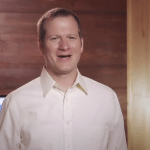About two years ago, we produced some short two- to three-minute education videos about Lean, Kaizen, and continuous improvement for KaiNexus. These were intended as short coaching sessions that would be sent to our customers / users and we've also shared them publicly.
Here is video #12 in the series, with Dr. Greg Jacobson:
Use Data for Improvement
Dr. Greg Jacobson and I re-shot these videos recently with a professional videographer. The changes with the videos:
- Greg is now in half of the videos
- The scripts were changed to be less healthcare specific, as we've added customers in other industries
- The video quality is much better
I previously did blog posts with the first ten videos. Those posts are still there, but they have the new versions of the videos. Click here to see all of the videos through my blog or here to view them on the KaiNexus website.
We hope you find the videos to be helpful and inspiring. Please let us know what you think by commenting here or on one of the videos.
You can also see our Education Videos playlist on YouTube, or you can also get the videos via iTunes as a video podcast.
Approximate Transcript:
 Hi, I'm Greg Jacobson, from KaiNexus, where we make improvement happen.
Hi, I'm Greg Jacobson, from KaiNexus, where we make improvement happen.
Sometimes, when you go to the doctor, they just know immediately what's wrong and how to fix it… the diagnosis and the treatment are obvious and straightforward. There are other times, though, when they have to investigate further — getting some labs or maybe an x-ray to help figure out what's going on. The same is often true with improvement work – sometimes we just know and sometimes we have to dig deeper.
There are many process improvement ideas that can be considered “just do its.” If there's a printer that's in a really inconvenient spot, just move it. If a change is low-cost and low-risk – meaning it's unlikely to cause any side effects, then just do it and then observe to see if the change really addressed the underlying problem or not.
Other changes require us to gather data to better gauge the impact of our change. Let's say we are trying to improve customer satisfaction scores related to our customer support. We could test different changes in a more methodical way… making one change and seeing the impact on scores for the next month.
We study the impact of change to see if we got the expected results. Once we find something that works, we can share that idea throughout the company … so they can implement the idea (or even build upon it).
In process improvements, we are following a similar approach called the PDSA cycle – Plan, Do, Study, Adjust. After planning and doing… understanding the problem and putting a change in place, we test to see if the change really worked… we don't assume. We test and confirm.
Some changes are quick and easy, some things need to be studied more deeply… either way, we have to properly evaluate the effect of our changes… to see if they are really improvements or not.
In process improvements, we are following a similar approach called the PDSA cycle – Plan, Do, Study, Adjust. After planning and doing… understanding the problem and putting a change in place, we test to see if the change really worked… we don't assume. We test and confirm.
Some changes are quick and easy, some things need to be studied more deeply… either way, we have to properly evaluate the effect of our changes… to see if they are really improvements or not.
Don't get paralyzed – it's OK to implement an idea that moves us in the right direction… some improvement is better than none. We often have to implement multiple improvements, building upon our ideas, to get closer to a perfect overall solution.
In one example, a hospital was trying to improve privacy for nursing mothers in the NICU. Instead of finding one silver bullet solution, they had many small ideas that pushed them in the right direction.
After making sure curtains got closed more consistently and putting up signs, the curtains still had some gaps that would open up as people walked by… so they implemented another idea – getting simple binder clips to keep the curtains closed… and then they improved the way the clips were stored… all of these different improvements added up to a nearly perfect overall solution.
Many people don't realize it, but Apple is a long time practitioner of continuous improvement. They are known for modern and stylish packaging, but they didn't create awesome packaging all at once. They have made (and continue to make ) hundreds of small, incremental improvements to their materials and processes – which resulted in some of world's most innovative packaging.
As we improve processes, we certainly want to understand the root cause of a problem and to think through our proposed solutions before we test them. We think of continuous improvement as a test because we're usually not 100% sure they will work as expected… we don't want to just rush into improvement without having a well-thought out hypothesis to test… but we don't want the other extreme of being so careful that we never implement anything.
We should keep in mind improvement work is a never-ending journey… so sometimes you have to just start moving in the right direction.
[adrotate banner=”144″]
What do you think? Please scroll down (or click) to post a comment. Or please share the post with your thoughts on LinkedIn – and follow me or connect with me there.
Did you like this post? Make sure you don't miss a post or podcast — Subscribe to get notified about posts via email daily or weekly.
Check out my latest book, The Mistakes That Make Us: Cultivating a Culture of Learning and Innovation:








